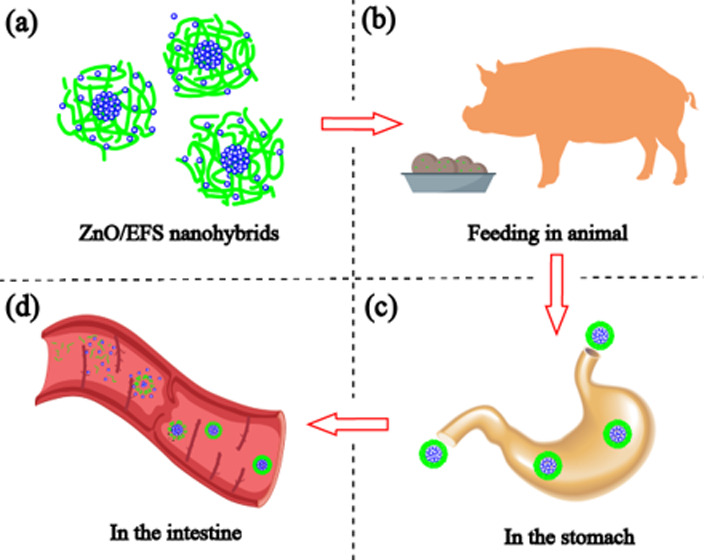- Record: found
- Abstract: found
- Article: not found
Synthesis of Zinc Oxide Eudragit FS30D Nanohybrids: Structure, Characterization, and Their Application as an Intestinal Drug Delivery System

Read this article at
Abstract

The present study was designed to develop multifunctional zinc oxide-encapsulated Eudragit FS30D (ZnO/EFS) nanohybrid structures as a biodegradable drug delivery system and as a promising successful carrier for targeting sites. The solvent evaporation method was used to fabricate the ZnO/EFS nanohybrids and the size, shape, stability, and antioxidant activity were characterized using transmission electron microscopy (TEM), scanning electron microscopy (SEM), X-ray diffraction (XRD), Fourier transform infrared (FTIR) spectroscopy, dynamic light scattering (DLS), thermogravimetric analysis (TGA), and an antioxidant (1,1-diphenyl-2-picrylhydrazyl (DPPH)). Zinc oxide-encapsulated Eudragit FS30D (ZnO/EFS) nanohybrid structures consisted of irregularly shaped, 297.65 nm-sized ZnO/EFS microcapsule, enduring thermal stability from 251.17 to 385.67 °C. Nano-ZnO was encapsulated in EFS through the formation of hydrogen bonds, and the average encapsulation efficiency for nano-ZnO was determined to be 96.12%. In vitro intestinal-targeted drug release assay provided 91.86% with free nano-ZnO, only 9.5% in acidified ZnO/EFS nanohybrid structure but the rate ZnO/EFS nanohybrids reached 93.11% in succus entericus resultantly modified nano-ZnO was proven proficient intestinal-specific delivery system. The stability of the ZnO/EFS nanohybrid structures was confirmed using ζ-potential and antioxidant activity analysis. Hence, the EFS nanoencapsulation strategy of ZnO provided a stable, nontoxic, and pharmacokinetically active intestine-specific system that can become the best choice for an effective oral feed additive in future.
Related collections
Most cited references56
- Record: found
- Abstract: found
- Article: not found
Zinc oxide nanoparticles: a promising nanomaterial for biomedical applications.
- Record: found
- Abstract: not found
- Article: not found
Greedy or needy? Land use and climate impacts of food in 2050 under different livestock futures
- Record: found
- Abstract: found
- Article: not found
